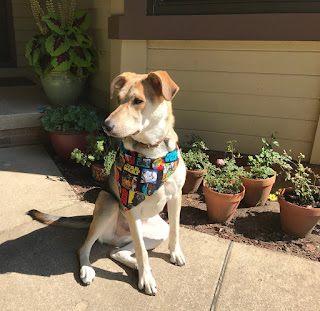As I was reading about different activities that qualify for weekly participation, I was curious about #lrnchat. I checked out their Twitter page and saw that they host a weekly twitter chat on Thursdays. Wait a minute, I thought to myself, that’s today...what luck! However, my enthusiasm was quickly deflated when I saw a recent tweet stating #lrnchat was on vacation. Oh well, something to look forward to next week. In the meantime, I was curious about what chat on twitter was all about. I’d never hear of a Twitter chat before but it didn’t seem too complex.
Some quick Google searching revealed that a Twitter chat (AKA tweet chat, tweet party, Twitter party) is a pre-arranged gathering of Twitter users to discuss a specific topic. The host will pose questions (Q1, Q2, etc.) and participants will answer (A1, A2, etc.). A designated hashtag (#) is used to link the posts together in a virtual conversation.
I found the site
TweetReports which gives a daily listing of the Twitter chats happening. It was a pretty good list with topics ranging from advertising and automotive to technology and writing, with lots in between. Since Thursday was quickly approaching past tense status, I looked ahead to see what Friday’s schedule had in store. As luck would have it, @UrbanBlissMedia was hosting a twitter chat on the topic of social media, Fridays from 9-10 am PST under the hashtag #365social. The TweetReports description seemed appropriate to the theme of #eme6414, even if the focus wasn’t specifically on education.
#365Social covers tips, tactics, news, and trend topics for individuals and businesses using social media.
I loaded up the Twitter client application
Twitterfall so I could keep up with what was sure to be a lively discussion. I entered the designated hashtag and waited with anticipation. As I waited some more I wondered what sort of questions would be posed and how many people would join in the discussion... *chirp *chirp. Nothing, nada, zilch. It looked like their would be no #365social Twitter chat today. Not wanting to admit total defeat I looked for another chat to join. I found Open Mic Career Chat, self-described as a “no-holds-barred career/job search chat. All truth; no BS.” This sounded interesting and the chat was already in progress so I entered the hashtag (#OMCchat) and tweets started cascading down the screen like, well, a waterfall. Today’s discussion topic was about job searching in 2020 and beyond.
The host posted short, broad questions and people would answer accordingly. I found it difficult to follow the full conversation because the tweets were truncated when displayed in Twitterfall and I would have to click the link for each one to read the rest of the post. Then I would go back to the main conversation and have to catch back up. It wasn’t too bad because new questions were posed frequently and I’m sure I will get better at it with more practice. However, it does seem like this format is not designed for a single stream of conversation where everyone participates on one topic, but rather more conducive to spawning a variety of tangents to allow participants to choose what they want to engage in.
The host brings everyone together in a shared space via the designated hashtag at a shared time and provides a question to get things started, but really, the participants are the ones who decide where the conversation will go.
About three-quarters of the way through the chat, Twitterfall crashes on me. I get a nasty pop-up message about invalid request tokens so I attempt to reload the page - no luck. I switch over to another Twitter client,
Tweetchat, and the page won’t even open. UGH! Why is this happening?! I tried a third client application,
Twubs, entered the hashtag and I was back in the conversation, whew! The chat was just entering the lightning round of questions when I finally reconnected. Around minute 45 The chat wrapped up the final question and the host thanked everyone for participating and also requested feedback on topics for next week’s chat. And like that, it was over.
There were only 14 contributors in the chat, from Connecticut to California, but it is impressive to think how powerful social media as a platform can be to bring people together from opposite sides of the country and even the world. Amazing things can happen when you bring together the right people and the right ideas and social media tools like Twitter are making it easier for that to happen, one chat at a time.
